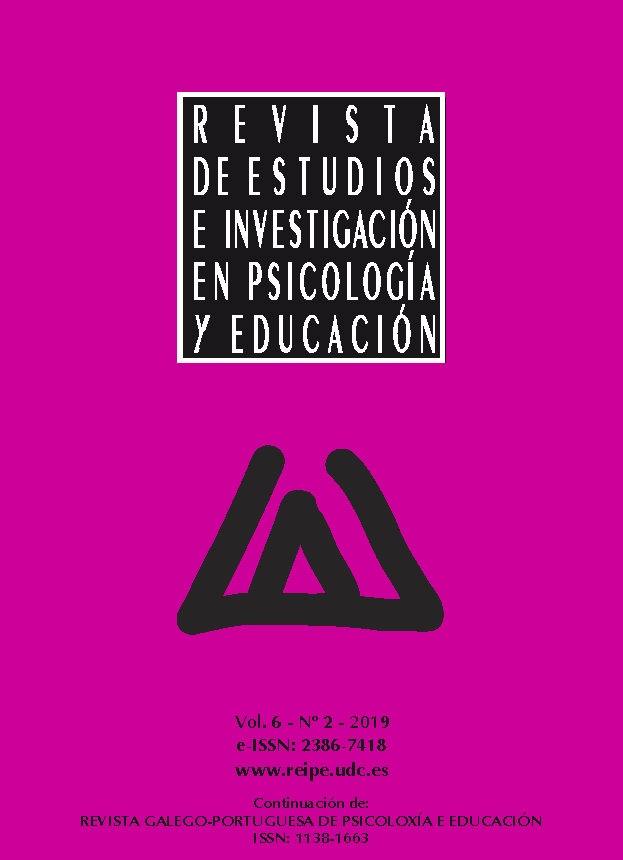Use of artistic-expressive agents in individuals with Autism Spectrum Disorder
Main Article Content
Abstract
Young people with autism spectrum disorder (ASD) are often treated using conventional approaches. However, there is growing evidence from empirical research to support the positive effects of art therapy on the development of young people with ASD. To investigate this idea, a study was carried out with six young people with ASD, aged 14-23 years, at a Portuguese Association for Developmental Disorders and Autism centre. The qualitative methodology used for the study included a variety of data collection techniques and instruments (documentary research, participant and structured observation, focus group interview, photographic and video record). The aim of the research was to analyse the impact of two creative, dynamic activities (interaction with an art installation, and the creation of a collaborative art panel) on improving the social skills of young people with ASD. The first activity involved the creation of a space in which the subjects were placed in an imaginary war situation that appealed to their senses encouraged them to put themselves in someone else’s shoes. The second activity was carried out using a digital art board that gave each subject the freedom to express themselves graphically, and then share their thoughts/perceptions about their drawings with the rest of the group as a way of developing their ability to listen to and accept other people’s opinions. The results showed that artistic-expressive activities had a positive impact on the participants’ social skills, thus developmental and expressive benefits of art therapy for people with ASD.
Keywords:
Downloads
Article Details
References
Alter-Muri, S. (2017). Art education and art therapy strategies for autism spectrum disorder students. Art Education, 70(5), 20-25. https://doi.org/10.1080/00043125.2017.1335536
APA, American Psychiatric Association (2013). Diagnostic and statistical manual of mental disorders, DSM5 (5th ed.). Washington, DC: Author.
Carvalho, M. (2001). Terapia cognitiva e comportamental através da arteterapia. Revista de Psiquiatria Clínica, 28(6), 318-321.
Ciornai, S. (2004). Percursos em arteterapia: Arteterapia gestáltica, arte em psicoterapia, supervisão em arteterapia. São Paulo: Summus Editorial.
Coy Guerrero, L., & Martin Padilla, E. (2017). Habilidades sociales y comunicativas a través del arte en jóvenes con trastorno del espectro autista (TEA). Estudios Pedagógicos, 43(2), 47-64. https://doi.org/10.4067/S0718-07052017000200003
D´Amico, M., & Lalonde, C. (2017). The effectiveness of art therapy for teaching social skills to children with autism spectrum disorder. Art Therapy. Journal of the American Art Therapy Association, 34(4), 176-182. https://doi.org/10.1080/07421656.2017.1384678
Dean, M., Harwood, R., & Kasari, C. (2017). The art of camouflage: Gender differences in the social behaviors of girls and boys with autism spectrum disorder. Autism, 21(6), 678-689. https://doi.org/10.1177/1362361316671845
Dias, C. (2000). Grupo focal: Técnica de coleta de dados em pesquisas qualitativas. Informação & Sociedade, 10(2), 141-158.
Elkis-Albuhoff, D. (2008). Art therapy applied to an adolescent with Asperger’s syndrome. The Arts in Psychotherapy, 35(4), 262-270. https://doi.org/10.1016/j.aip.2008.06.007
Emery, M. J. (2004). Art therapy as an intervention for autism. Art Therapy. Journal of the American Art Therapy Association, 21(3), 143-147. https://doi.org/10.1080/07421656.2004.10129500
Hewitt, S. (2006). Compreender o autismo: Estratégias para alunos com autismo nas escolas regulares. Porto: Porto Editora.
Jordan, R. (2000). Educação de crianças e jovens com autismo. Lisboa: Instituto de Inovação Educacional do Ministério da Educação.
Kearney, A. B. (2009). Compreender a análise aplicada do comportamento: Uma introdução à ACC para pais, professores e outros profissionais. Porto: Porto Editora.
Lo-Castro, A., Benvenuto, A., Galasso, C., Porfirio, C., & Curatolo, P. (2010). Autism spectrum disorders associated with chromosomal abnormalities. Research in Autism Spectrum Disorders, 4(3), 319-327. https://doi.org/10.1016/j.rasd.2009.10.006
Lopes, J., Rutherford, R., Cruz, M., Mathur, S., & Quinn, M. (2006). Competências sociais, aspetos comportamentais, emocionais e de aprendizagem. Braga: Psiquilibrios Edições.
Marques, C. E. (2000). Perturbações do Espectro do Autismo: Ensino de uma intervenção construtivista e desenvolvimentista com mães. Coimbra: Quarteto Editora.
Oliveira, M., & Oliveira, R. (2016). A arteterapia no tratamento do transtorno do espectro autista. VII Congresso de Iniciação Científica da FEPI (pp. 1-4). Itajubá: Centro Universitário de Itajubá.
Philippini, A. (2011). Narrativas na imagem: Consciência estética em arteterapia. In G. Ormezzano (Coord.), Educar com arteterapia: Propostas e desafios (pp. 15-20). Rio de Janeiro: Wak Editora.
Shattuck P. T., Durkin, M., Maenner, M., Newschaffer, C., Mandell, D.S., Wiggins, L., … Cuniff, C. (2009). Timing of identification among children with an autism spectrum disorder: Findings from a population-based surveillance study. Journal of American Academy Child Adolescent Psychiatry, 48(5), 474-483. https://doi.org/10.1097/CHI.0b013e31819b3848
Sociedade Portuguesa de Arte-Terapia (SPAT). (1996). O que é a Arte terapia? Obtido de http://arte-terapia.com/o-que-e-arte-terapia
Springham, N., & Huet, V. (2018). Art as relational encounter: An ostensive communication theory of art therapy. Art Therapy. Journal of the American Art Therapy Association, 35(1), 4-10. https://doi.org/10.1080/07421656.2018.1460103
Van Lith, T., Stallings, J., & Harris, C. (2017). Discovering good practice for art therapy with children who have Autism Spectrum Disorder: The results of a small scale survey. The Arts in Psychotherapy, 54, 78-84. https://doi.org/10.1016/j.aip.2017.01.002



